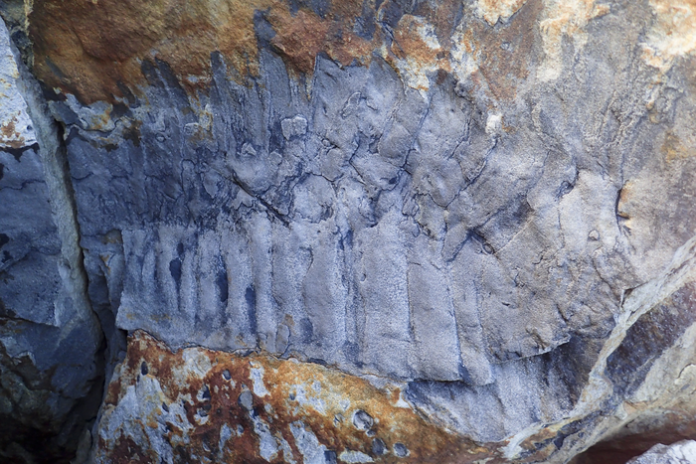
The beaches of Northern England have revealed the largest ever giant millipede fossil, the size of a car
The remains of a created known as Arthropleura dates from around 326 million years ago over 100 million years before the Age of Dinosaurs during the period known as the Carboniferous Period.
Arthropleura is the largest-known invertebrate animal
The fossil was discovered in January 2018 in a large block of sandstone that had fallen from a cliff to the beach at Howick Bay in Northumberland. During the Carboniferous Period, when Great Britain lay near the Equator, Northumberland had a more tropical climate.
The new specimen is made up of multiple articulated exoskeleton segments, similar in form to modern millipedes. This is the third fossil of its kind found and is the oldest and largest so far, being about 75 centimetres long.
The original creature is estimated to have measured around 2.7 metres long and weighed around 50 kilograms, making it the largest-known invertebrate animal.
“Fluke discovery”
Published in the Journal of the Geological Society, Dr Neil Davies from Cambridge’s Department of Earth Sciences, the paper’s lead author stated the ‘fluke’ way the fossil was discovered, “the way the boulder had fallen, it had cracked open and perfectly exposed the fossil, which one of our former PhD students happened to spot when walking by.” The Arthropleura was found in a fossilised river channel: it was likely a moulted segment of its exoskeleton that filled with sand, preserving it for hundreds of millions of years.
The fossil was extracted in May 2018 with permission from Natural England and the landowners, the Howick Estate and taken to Cambridge so it could be examined in detail.

There are only two other known Arthropleura fossils, both found in Germany, and much smaller than the new specimen. Although this is the largest Arthropleura fossil skeleton ever found, we still know very little about them. “Finding these giant millipede fossils is rare, because once they died, their bodies tend to disarticulate, so it’s likely that the fossil is a moulted carapace that the animal shed as it grew,” said Dr Neil Davies. “We have not yet found a fossilised head, so it’s difficult to know everything about them.”
Arthropleura animals crawled around Earth’s equatorial region for around 45 million years, before going extinct, the exact cause of which is uncertain.
The fossil will go on public display at Cambridge’s Sedgwick Museum in the New Year.










